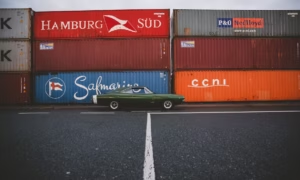In an increasingly interconnected world, the need for international vehicle moving has surged as individuals and businesses relocate across borders. Whether it’s a family moving overseas or a corporation expanding its operations globally, the efficient and secure transport of vehicles is a critical aspect of the relocation process. Vehicle Shipping services play a pivotal role in ensuring that automobiles reach their destination intact and on time.
Understanding International Vehicle Moving
International vehicle moving involves the transportation of vehicles across borders, encompassing cars, motorcycles, trucks, and other types of automobiles. This complex process requires careful planning, adherence to international regulations, and collaboration with reliable vehicle shipping providers. The following factors are essential to consider when engaging in international vehicle moving https://vehicleshipping.net/international-vehicle-moving/:
Documentation and Regulations: Ensure that all necessary documentation, such as ownership titles, customs declarations, and shipping contracts, is in order. Familiarize yourself with the regulations of the destination country, including emission standards, safety requirements, and import restrictions.
Choose the Right Shipping Method: There are various methods for shipping vehicles internationally, including container shipping, roll-on/roll-off (RoRo) shipping, and air freight. The choice depends on factors such as budget, destination, and the type of vehicle being transported.
Select a Reputable Vehicle Shipping Company: Research and choose a reliable vehicle shipping company with a proven track record in international vehicle moving. Read customer reviews, verify certifications, and inquire about insurance coverage to ensure the safety of your vehicle during transit.
Preparation of the Vehicle: Thoroughly clean and inspect the vehicle before shipping to document any existing damage. Remove personal items from the vehicle, as many shipping companies do not allow personal belongings to be transported with the vehicle.
Shipping Methods for International Vehicle Moving
Container Shipping: In container shipping, vehicles are placed inside secure containers, protecting them from the elements and potential damage. This method is suitable for valuable or classic cars and provides an additional layer of security.
Roll-On/Roll-Off (RoRo) Shipping: RoRo shipping involves driving the vehicle onto a specialized vessel, securing it for transport, and driving it off upon arrival. It is a cost-effective method for shipping standard vehicles and is commonly used for transporting cars and trucks.
Air Freight: Air freight is the fastest method of international vehicle moving, suitable for high-value or time-sensitive shipments. While more expensive than sea transport, air freight reduces transit time significantly.
Key Considerations for a Smooth International Vehicle Moving Process
Customs Clearance: Work closely with the shipping company to navigate customs clearance processes, ensuring compliance with the regulations of the destination country.
Insurance Coverage: Verify the insurance coverage provided by the shipping company and consider additional insurance for added protection against unforeseen events during transit.
Delivery Options: Discuss delivery options with the shipping company, including door-to-door or port-to-port delivery, based on your preferences and convenience.
Communication and Tracking: Maintain open communication with the shipping company throughout the process and inquire about tracking options to monitor the status of your vehicle in real-time.
Ensuring a Seamless Transition: Tips and Best Practices
Early Planning and Scheduling: Initiate the planning process well in advance to allow for any unforeseen delays or challenges. Schedule the shipment with the shipping company early to secure a spot and potentially benefit from better rates.
Thorough Vehicle Inspection: Conduct a detailed inspection of the vehicle, documenting any existing damage with photographs. This documentation will be crucial for insurance claims in the event of damage during transit.
Proper Vehicle Preparation: Drain the fuel tank to a recommended level, remove custom accessories, and secure loose parts to prevent damage during transit. Ensure that the vehicle is mechanically sound, reducing the risk of breakdowns during transport.
Research Destination Regulations: Understand the specific regulations of the destination country regarding emissions, safety standards, and modifications. Adhering to these regulations will expedite the customs clearance process.
Insurance Considerations: Carefully review the insurance coverage provided by the shipping company. Consider purchasing additional insurance, especially for high-value vehicles, to provide comprehensive coverage.
Stay Informed about Shipping Progress: Regularly communicate with the shipping company to stay informed about the progress of your vehicle. Ensure that you have access to tracking information, allowing you to monitor the location and status of your shipment.
Budgeting for Additional Costs: Anticipate and budget for potential additional costs such as customs duties, taxes, and fees imposed by the destination country. Being financially prepared will prevent last-minute complications.
Selecting the Right Port: Choose the shipping port strategically, considering factors such as proximity to your location, ease of access, and the shipping company’s expertise at that port.
Conclusion
International vehicle moving is a complex but manageable process with the right planning and collaboration with reputable vehicle shipping providers. By understanding the documentation requirements, choosing the appropriate shipping method, and adhering to customs regulations, individuals and businesses can ensure a smooth and secure transition for their vehicles across international borders. With the global nature of our interconnected world, efficient international vehicle moving services are becoming increasingly essential for those embarking on new journeys or expanding their horizons.



































